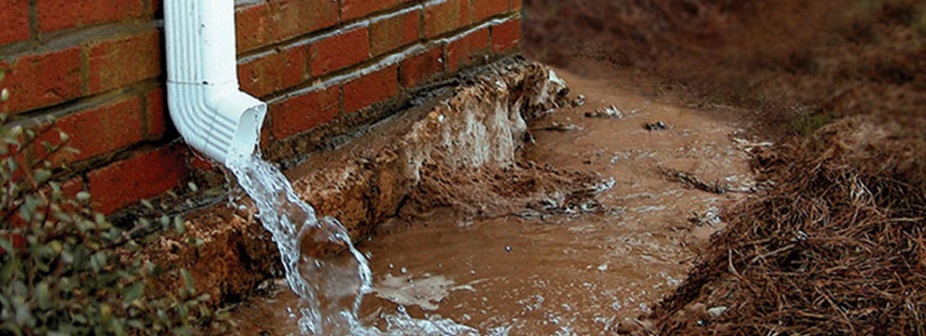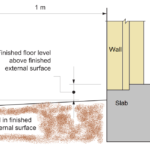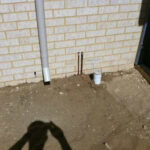This is one of those jobs that can be simple, inexpensive, and even fun, to rectify. But more importantly it can save you a world of problems and a lot of money in the long-term, particularly if you live somewhere that experiences torrential rain. (like Townsville ⛈😉).
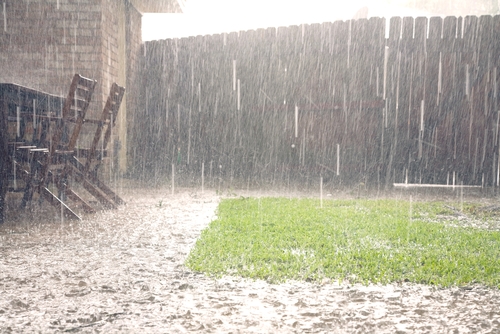
The Problem:
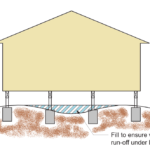
In simple terms the problem we’re addressing is that of water pooling against your house’s foundations (if your house is on a concrete slab), or water pooling under your house (if you have suspended flooring)(Fig 1).
Having water pool against, or under, your house is undesirable for a few key reasons that can adversely affect the structural integrity of your house, necessitating significant, expensive repair work:
- Persistently moist ground next to your house creates the opportunity for termite infestation. This is why having gardens up against your house is not advised.
- Water pooling against foundations will seep under them over time and can cause the foundations to sink and/or crack.
- Water pooling under suspended floors can cause foundations to sink.
And of course it’s just not nice having boggy ground and mud around your house.
Whether or not water pools against, or under, your house is dependant upon a combination of: the gradient of the ground surrounding your house; the state of the storm water drainage away from your house; and how the downpipes that take water off your roof are set up.
Ideally this problem shouldn’t even exist. The National Construction Code mandates measures to ensure that surface water is diverted away from buildings. This should be achieved by storm water drainage systems and by the ground around buildings being graded such that surface water flows away from foundations (Fig 2). Of course in reality this problem does exist and water often pools where it shouldn’t for a number of reasons:
- Down pipes may have been installed incorrectly or without the benefit of seeing where water tends to go when it rains at a property;
- Appropriate drainage/grading may not have been installed, or checked, at the time of construction (Fig 3);
- The mandated grading away from a house may have been installed but is nonetheless insufficient given the amount of rainfall or localized flooding that the house is subject to;
- The mandated grading away from a house may have been removed by erosion, pets digging or by unwitting gardening or landscaping; or
- Existing storm water drainage may have become blocked.
What to do about the problem:
Perhaps the first thing to do is identify if the problem exists. The next time it rains, or shortly thereafter, have a walk around your house and see how well water is being diverted away, by either a drainage system or the gradient of the ground. If there is water sitting next to your house that’s not going anywhere its time for corrective action.
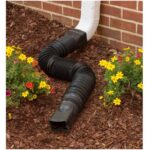
There are various options to rectify the problem. One or more of the following options may be necessary:
Extending downpipes to get water away from foundations. This is the simplest and most cost effective solution. A downpipe extension and/or redirection can ensure that downpipes discharge further from your house in order to keep your foundations from inundation. This can be done with either fixed pipe or with flexible pipe (Fig 4) or removable pipes that can be moved out of the way for mowing or other activities (Fig 5). Alternatively; the same outcome can be achieved without using pipes at all, but rather with the addition of an impervious surface, such as pavers or concrete or more elaborate landscaping solutions (Figs 6 & 7). As long as the water is moved away from foundations before it has a chance to pool and soak in, it’s a success!
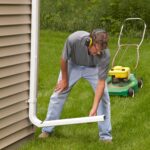

Earthworks. If your grading is the root cause of the issue, it will be necessary to transform your landscape to ensure water naturally flows away from building foundations and/or does not pool under suspended flooring. In the best-case scenario this may be achievable with a shovel, a wheelbarrow and a weekend. Otherwise the use of plant equipment may be necessary. In certain cases, the extension or alteration of downpipes may be effective as a means of overcoming sub-optimal grading. Although if it is groundwater runoff, rather than water from your roof, that is pooling against/under your house; earthworks will be a necessity.
Clearing of blocked storm water drains. If you find that your gutters or drainage systems are clogged it’s important to clear them as quickly as possible. If the pipes are easily accessible this is often a simple task that won’t require any extensive experience or professional assistance . Remove any debris or waste from your drainage system and watch as the pooling water subsides.
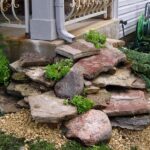
I hope this blog helps you with the important task of keeping your foundations as dry as possible, if you‘d like me to assist you in any way please don’t hesitate to contact me.

